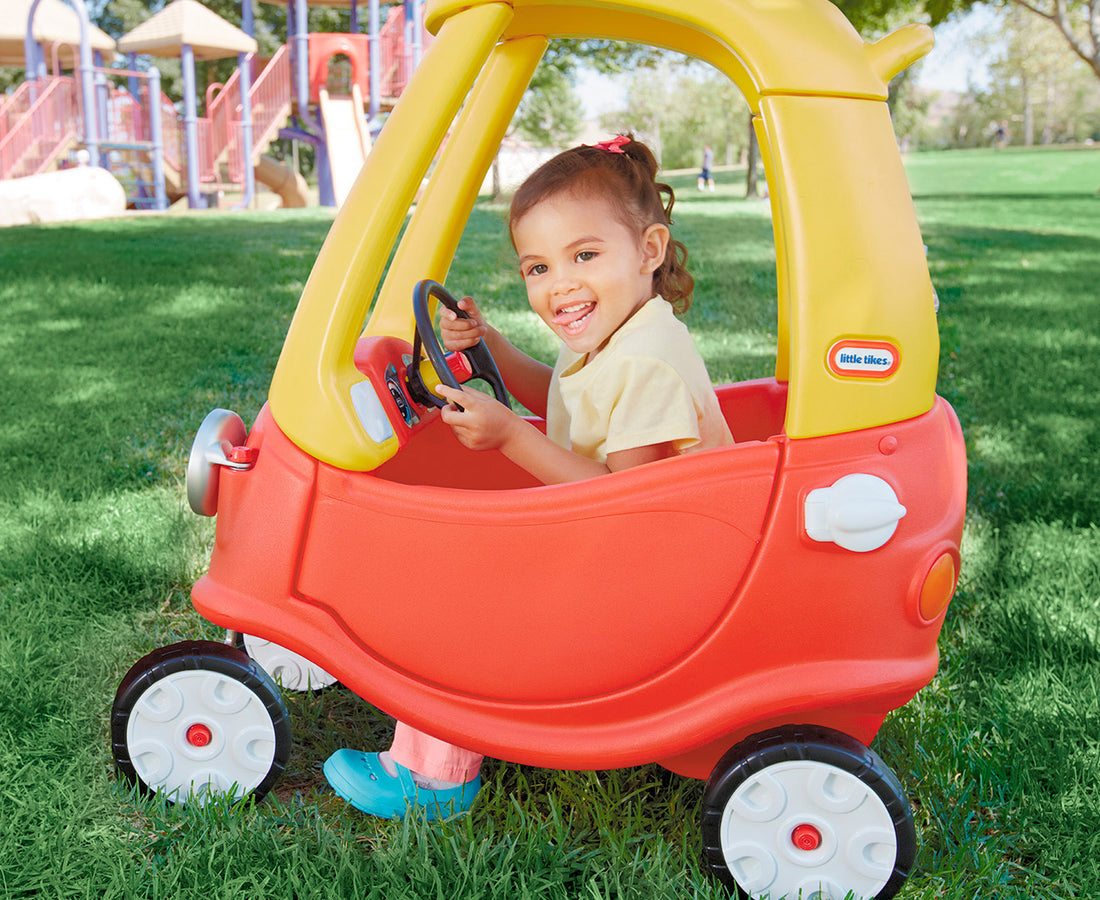
What age should my child use a ride on toy?
Toyland TreasuresShare
What Age Should My Child Use a Ride-On Toy? A Parent’s Guide
Ride on toys are a delightful way for children to explore their environment, develop motor skills, and engage in active play. However, determining the right age for your child to start using a ride on toy can be challenging. This guide will help you understand the appropriate age for different types of ride on toys and how they contribute to your child's development.
Developmental Milestones and Ride-On Toys
Children develop at their own pace, and this is especially true when it comes to physical abilities and coordination. While age guidelines can be helpful, it’s essential to consider your child’s individual readiness and developmental stage. Here's a general breakdown:
6 to 12 Months: Push-Along Toys At this age, babies are starting to develop their gross motor skills, such as sitting up and beginning to crawl. Push-along toys are ideal for this stage as they help strengthen your child’s legs and improve their balance. These toys usually come with a stable base and a handle that your baby can hold onto while learning to walk.
12 to 18 Months: Ride-On Toys Without Pedals As toddlers begin to walk more confidently, they can start using ride-on toys without pedals. These toys allow your child to sit and push themselves along using their feet, helping to develop coordination and leg strength. These early ride-on toys are often low to the ground, ensuring that your child can easily get on and off by themselves.
18 to 36 Months: Pedal-Powered Ride-On Toys Between 18 months and 3 years, many children are ready for pedal-powered ride-on toys, such as tricycles. These toys require more advanced motor skills, including the ability to pedal and steer simultaneously. Introducing these toys helps improve coordination and offers a sense of independence as your child learns to navigate their environment on their own.
3 to 5 Years: Electric Ride-On Toys Children aged 3 to 5 years may be ready for battery-operated ride-on toys, such as small electric cars or scooters. These toys usually come with safety features like parental remote controls and adjustable speed settings to ensure a safe riding experience. Electric ride-on toys help develop spatial awareness and hand-eye coordination.
5+ Years: Advanced Ride-On Toys For older children, more complex ride-on toys, including bicycles, scooters, and larger electric cars, are appropriate. At this stage, your child likely has the balance and motor skills needed to handle faster and more challenging toys. These toys not only provide hours of entertainment but also encourage outdoor play and physical exercise.
Enhancing Playtime with Ride-On Toys
Ride on toys offer more than just physical benefits. They also play a crucial role in social, emotional, and cognitive development. Here are some tips to maximize the benefits of ride-on toys:
Encourage Group Play: Invite friends or siblings to join in, which can help your child develop social skills like sharing, taking turns, and cooperating with others.
Create Fun Challenges: Set up simple obstacle courses or races to make playtime more exciting and challenging, helping your child improve their motor skills and problem-solving abilities.
Mix in Imaginative Play: Encourage your child to incorporate their ride-on toy into imaginative play scenarios, such as pretending to be a race car driver or delivery person. This can enhance creativity and cognitive development.
Ready for More Fun? Check Out Our Ride On Toys!
Incorporating ride on toys into your child's playtime can offer hours of entertainment and physical activity, helping them build confidence and coordination.
At Toyland Treasures, we have a fantastic selection of ride on toys that are perfect for any adventure-loving child. Explore our toys today and find the perfect ride on toy to ignite your child's imagination. Shop now at our online toy store, where every toy is a treasure waiting to be discovered!